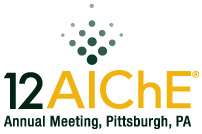

Coal combustion is a single largest known anthropogenic source for mercury (Hg) emission. Recently, US EPA has proposed Mercury and Air Toxics Standards (MATS) in order to regulate emissions of Hg and other pollutants. Many Hg control technologies have been developed, such as activated carbon injection, catalytic oxidation of Hg and metal oxide sorbent injections. However, no single technology can have effective and economical Hg removal performance for various coal combustion conditions and existing control devices for other pollutants. We evaluate the performance of the sorbent technologies and their combinations under different combustion conditions in both lab-scale (a drop-tube furnace) and pilot-scale (the facility capacity: 1 MW) coal combustors. These sorbents include titanium dioxide, selective catalytic reduction (SCR) catalysts (e.g. vanadium, molybdenum, tungsten oxides and zeolites), potassium iodide and modified carbon particles. Hg speciation in flue gas was also studied for a variety of combustion conditions and sorbent injection methods.
Presenter(s)
Once the content has been viewed and you have attested to it, you will be able to download and print a certificate for PDH credits.
If you have already viewed this content,
please click here
to login.
